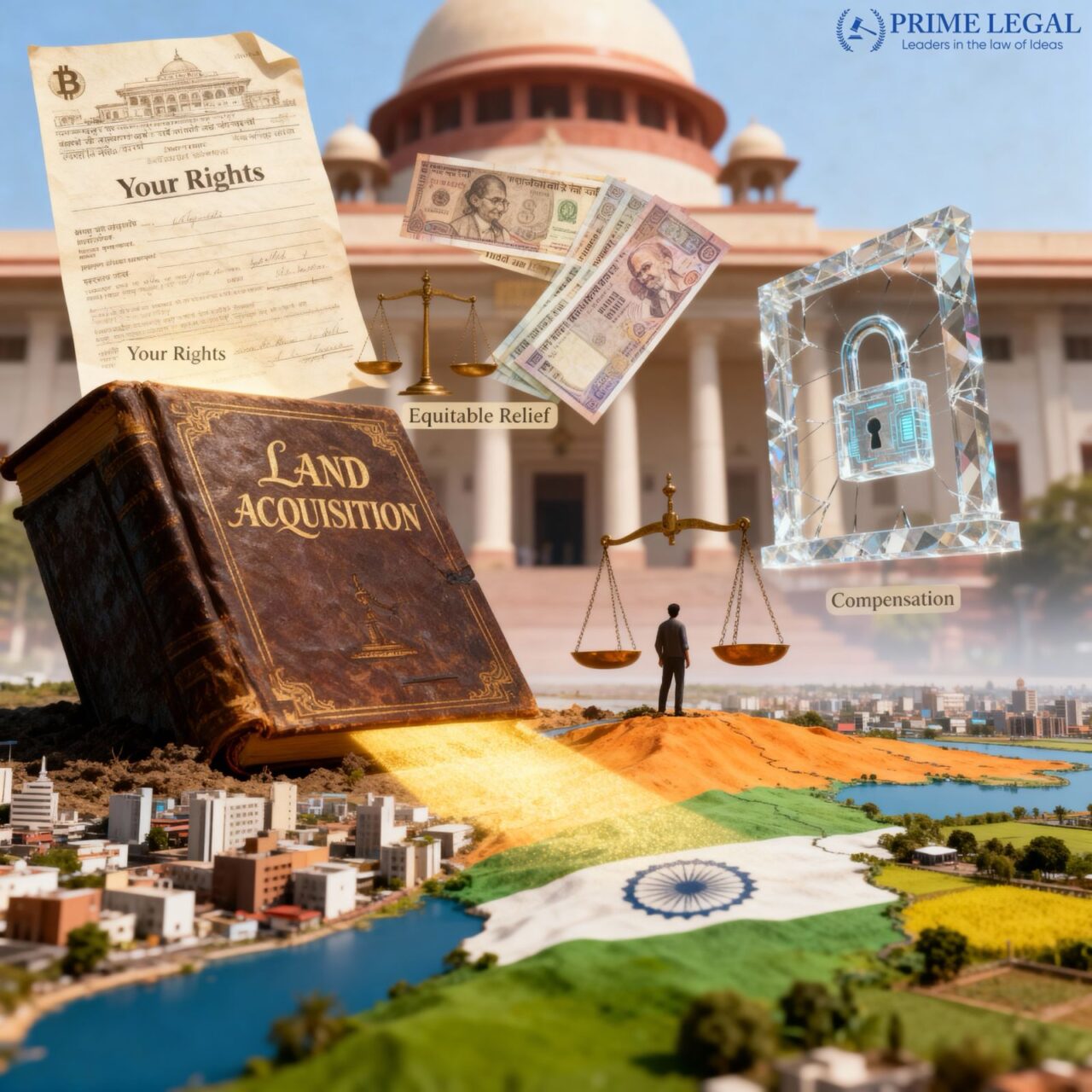FACTS
The instant appeal has been preferred by the State of West Bengal against the judgment of the High Court of Calcutta, which upheld the order directing the State to restore 28 Bighas of land to M/s Santi Ceramics Private Limited (Respondent 1). With official approval, the Respondent established a ceramics manufacturing unit by purchasing 28 bighas. Nevertheless, the acquisition process for the Singur project was started when the Land Acquisition Collector (LAC) issued a Section 4 notice under the Land Acquisition Act, 1894.
In Kedar Nath Yadav v. State of West Bengal, 2016, the farmers challenged the Singur acquisition. The court ruled that the acquisition should be revoked and ordered the state to restore the land to the original landowners/cultivators within 12 weeks. The State rejected the Respondent’s request for restoration following the ruling. However, the Calcutta High Court ordered the restoration of land and structures to the Respondent, which led to this appeal. [Kedar Nath Yadav v. State of West Bengal, 2016 AIR 2016 SC 4156]
ISSUES
- What is the scope of relief granted in the Kedar Nath Yadav case? Does it include Respondent No. 1?
- Whether non-parties to the earlier litigation (who did not challenge the acquisition earlier) can benefit from a later judgment quashing the acquisition. What are the legal consequences of a long delay in questioning the acquisition and acceptance of compensation without demur?
LEGAL PROVISIONS
Land Acquisition Act, 1894
Section 4- Preliminary notification for acquisition
Section 5-A- Right to object to acquisition
Section 6- Declaration of intended acquisition
Section 11- Award of compensation
ARGUMENTS
APPELLANTS
The Appellants argued that the High Court had made an error in extending restoration to Respondent 1. They argued that the Kedar Nath judgment was meant to protect vulnerable cultivators who lacked financial resources to challenge the governmental action, not industrial entities with financial means.
They also highlighted that Respondent 1 never raised any grievance against the acquisition. It was raised only after the Kedar Nath case. The compensation granted was accepted by them, and hence they acquiesced to the acquisition.
They argued that allowing restoration would set a dangerous precedent, leading to an increase in claims by corporate entities and burdening the state.
RESPONDENT No. 1
The Respondent argued that the Kedar Nath judgment made no distinction between cultivators and industrial landowners. Thus, “landowners/cultivators” would encompass every person whose land was subject to the flawed acquisition. They relied on Section 4 of the 1894 Act, which considers all affected persons uniformly as “owners of land.”
They highlighted that they raised objections under Section 5-A, along with detailed inventories of assets that had been rejected without proper consideration. The state offered compensation for structures that indicate official acknowledgment of the Respondent’s rights. The state’s refusal to restore land was arbitrary.
ANALYSIS
The court held that the Kedar Nath Yadav case aimed to prevent the acquisition from disproportionately affecting vulnerable communities that lack financial resources and institutional access to challenge governmental action. The court limited the relief to “poor agricultural workers” and “the weakest sections of society.” It highlighted that subsistence farmers depend entirely on land, and when that land is taken away in a flawed manner, they are left with no alternative livelihood. That is why there is a need for a remedy to address this situation.
The court held that the classification carries legal significance to ensure that land acquisition proceedings assume finality while balancing the rights of vulnerable communities. To give effect to this, the Kedar Nath relief is limited and not available to all persons. It also highlighted that the case started off as a PIL, which is often initiated to help poor people. The only objective was to protect cultivators whose livelihoods faced uncertainty due to large-scale acquisition.
It was also observed that orders quashing acquisition proceedings may operate in personam or in rem. When the court quashes the acquisition on personal grounds, the relief operates in personam. But when the court declares the entire process void ab initio, then the relief operates in rem. Thus, the benefits of quashing do not accrue to persons who were not parties unless the Court has struck down the entire acquisition. The Respondent’s failure to challenge the acquisition and acceptance of compensation amounted to acquiescence and estoppel.
JUDGMENT
Following the above reasoning, the Supreme Court allowed the appeal and set aside the High Court’s orders. It held that the Kedar Nath Yadav case does not extend to industrial entities. In addition to this, the Respondent is barred by delay and acquiescence. It directed the Respondent to remove any remaining structures, or the state may auction such items and receive proceeds from it.
CONCLUSION
The Court’s relief was intended to protect disadvantaged groups. Due to the limited nature of relief, it cannot be expanded to include commercial entities that had access to resources and accepted acquisition. This decision also ensures finality in land acquisition and discourages opportunistic claims.
Click here to read more: The State of West Bengal and Others versus MS Santi Ceramics Pvt. Limited and Another
“PRIME LEGAL is a full-service law firm that has won a National Award and has more than 20 years of experience in an array of sectors and practice areas. Prime legal falls into the category of best law firm, best lawyer, best family lawyer, best divorce lawyer, best divorce law firm, best criminal lawyer, best criminal law firm, best consumer lawyer, best civil lawyer.”
WRITTEN BY: FARZEEN ZAMAN


